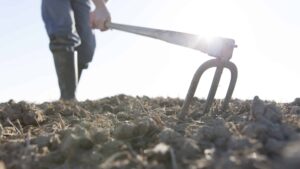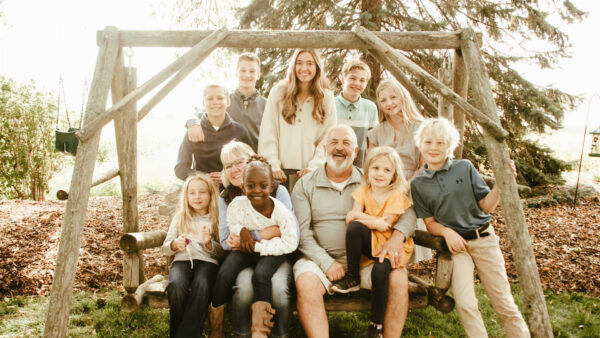Giant Highlights
With no shortage of opportunities in the Canadian seed industry, many of the experts in this year’s Giant Views of the Industry video series had interesting stories to tell about what they are working on and how they are responding to lingering challenges. Enjoy some of the highlights of their news and insights.
Tweaking Variety Registration
—Jeff Reid, SeCan
It’s In the Bag
“I see refuge-in-a-bag as one of the most important, if not the most important, technologies that has been introduced in the marketplace since the first Bt corn was introduced in the mid-1990s. And the reason I say that is twofold: First of all, up until now we’ve had to plant a 20 per cent refuge block in fields. And that requires some planning and discipline to ensure we’re planting that 20 per cent refuge. There were a lot of questions coming forward in terms of how could we get producers to protect the technology so that it will last into the future, and how could we simplify it? And, really, the refuge-in-the-bag has done that. Not only are we increasing our yield potential by going from a 20 per cent block refuge down to a five per cent refuge-in-a-bag, we’re also making the refuge compliance automatic.”
—Stephen Denys, Pride Seeds
Our Job is 24/7
“I am most excited about our access to leading genetics and the partnerships that we have domestically, internationally, publicly and privately, which are allowing Canterra Seeds to develop a world-class portfolio. I am very proud of the wheat, oats, barley, pea, beans, canola and flax products that we can offer the farmer in order to help him facilitate his main objective—to produce a crop that contributes positively to his bottom line. Canterra Seeds is a seed company. That is what we focus on 24/7 and our job is to make sure that we’ve got the right genetics in the right place at the right time. It’s a full-time effort to make sure that’s exactly what we’re doing.”
—David Hansen, Canterra Seeds
Offering More Value
“Six or seven years ago, with our Registered Seed Establishment and Seed Lab audit programs well established, CSI started to explore the potential to offer other auditing services to our clients. Finding compatible programs, we could save our clients some costs by conducting more than one audit during a single visit. Organic certification, for instance, was a natural fit since we already had a number of clients that were interested in organic certification.
Today, CSI is an organic certification body; we certify to the Canada organic standards with equivalency to the EU and U.S. national organic programs and also to the Japanese agricultural standards for organic certification. We also work in other programs. We audit our clients against the Canadian Grain Commission’s Identity Preserved and food safety programs, and we provide inspection services for the Canadian Nursery Landscape Institute’s Clean Plants programs, a phytosanitary program for Canadian nurseries. These non-seed related programs are offered under CSI’s secondary business, the Centre for Systems Integration.”
—Roy van Wyk, Canadian Seed Institute
Beating Fusarium
We offer two fusarium tests: the DNA-based test is quick and more sensitive and allows us to get results to a customer in a couple of days. It is utilized as an early warning because of its sensitivity and identifies lots that have a late infection of fusarium as well as systemic infection. So we can pick it up quickly and alert the grower or seed plant to potential issues. We follow with a plate test, which has been the mainstay, because we can quantify those positives from the DNA.
However, if it is a late infection the plate can be negative because the fusarium infection is on the surface. The plate test sterilizes the seed so we cannot pick up spores on the seed, and today, with so much no-till farming, those spores lurk in the crop residues until a year like this year when it explodes. It is important to note that labs only using the plate can potentially miss those late-infected samples. It is also interesting that the infection is not moving north as we expected; it’s coming in from the east where there is a much higher spore load.”
—Sarah Foster, 20/20 Seed Labs
Strength in Partnerships
“We are building on the public-private partnerships that really made SeCan what it is today. Originally when SeCan was formed, we were really the ultimate public-private partnership in that we were formed to commercialize the genetics that were developed by AAFC and other public breeding institutions. Over time, SeCan has really evolved to be a genetic supplier to our members of all kinds of genetics and traits—not just public sector but also from the private sector as well. Currently, with AAFC cutbacks and so on, we’re looking at more opportunities to get involved upstream in research, not just distributing and commercializing the varieties but also directing research and being involved with plant breeders in terms of funding their programs directly. Therefore, we’re involved right now in funding research across Canada. We have about 16 different research projects generally at any one time under way, spanning soybeans, cereals, flax—pretty much all the major open pollinated crops across Canada.”
—Jeff Reid, SeCan
Get Blogging
“At Pride Seeds, one of the things we identified a few years ago was the role social media was going to play in terms of communicating our messages to customers. And that’s not just messages about specific products but, perhaps more importantly, about the agronomic positioning of not just our products but anybody else’s products, so farmers can best utilize the technology they are planting to increase the yields on their farms.
Social media tools, which started with the Pride Seeds blog as an example, is one of those tools that we’re utilizing to reach customers with relevant and timely information. It also includes the adoption of Facebook and, more recently, the adoption of Twitter. Between these and our website, all of these tools play an integrated role in terms of reaching the producer through social media, which is becoming a much more relevant and increasingly used tool by our customers when compared to traditional media sources.”
—Stephen Denys, Pride Seeds
All Companies Have a Role
—David Hansen, Canterra Seeds












